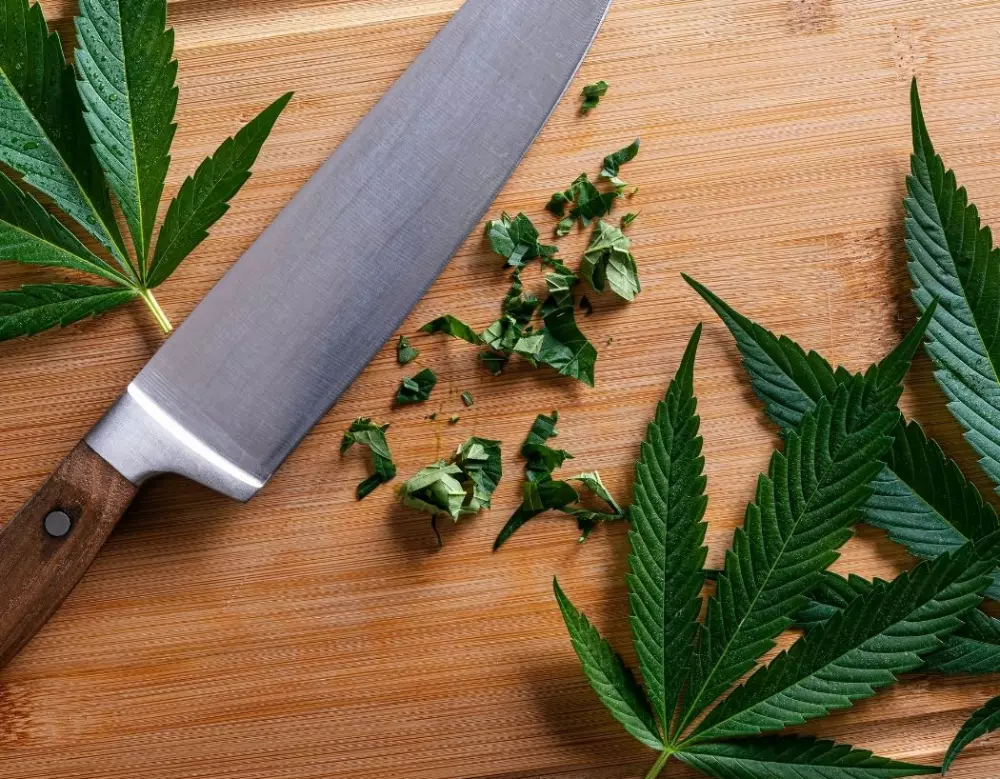If you’ve ever had the munchies, you already know that cannabis and food are a match made in heaven. Not only does cannabis make food taste better and help you enjoy it more, but when consumed alongside food, cannabis can become a powerful pairing agent, driven by flavors in both flower and food.
But understanding how to pair cannabis purposefully with food begins first with learning how to taste cannabis. Once you have mastered the art of teasing out flavors and nuance, you’ll be primed to pair.
How to Taste Cannabis
To taste cannabis, there’s a simple three-step technique. You can do this three-step tasting method with a joint or a pipe. If you are using a pipe, make sure it is immaculately clean! A dirty pipe will hinder you from fully examining the flavors in your flower.
Step One: Nose It
The first step in tasting anything is smelling it, and cannabis is no different. I recommend storing your flower in glass jars in order to preserve its odor, flavor, and freshness, and glass is best for evaluating the aromas of cannabis as well. If your cannabis is in a plastic bag or tube, try moving it to a glass jar to avoid aromatic contamination from any plastic packaging. I like to keep a few Mason jars handy, and will hold on to previously used jars or tubes for future use, and you can even purchase joint tubes like these online.
No matter what container your cannabis is in, nosing the jar/tube/bag is the first step in understanding what this cannabis variety will taste like. Driven by terpenes, the aromatic molecules that give cannabis varieties their signature aromas, each cultivar will have its own signature aromas, ranging from citrusy and floral, to gassy and earthy. Open your jar, stick your nose in, and inhale deeply; in well-cultivated cannabis, high notes should jump out and give you an idea of the key flavors to expect on the palate.
Step Two: Terpene Pull
Once you know what your cannabis smells like, you can bring that flavor on to the palate using what’s called a terpene, or dry pull. Without lighting it, bring the joint or your pipe to your mouth and inhale deeply. This will bring the flavor directly on to your palate, and you’ll be able to tease out more nuanced tasting notes. What appeared as “sweet” on the nose may deepen to caramel and cream, or “tropical” becomes mango or papaya. This is the cleanest and most pronounced expression of flavor you’ll get with cannabis.
Step Three: Smoke It
Light it! I like to use a hemp wick to avoid butane interfering with the flavor profile. Some have suggested using matches, but I find that the matches’ aroma-busting properties interfere with the tasting (there’s a reason they’re used in restrooms, after all!)
As you light your bowl or joint, the first draw will bring that variety’s smoke profile onto your palate. Focus on the weight of the smoke, the smoothness, acidity, and flavor. To complete your tasting, also take note of the variety’s effect; is it heady and stoney, or bright and invigorating? How does it make you feel?
If you’re looking to grow your cannabis knowledge, keeping track of all of these notes in a journal will help you better understand your preferences and remember what you like in the future.
Pairing Cannabis With Food
Now that you know how to taste cannabis, you can begin exploring pairing cannabis with food. Think about this as you might think about a food and wine pairing, where you’re aiming to either pair matching or contrasting flavors. You never want one element to overpower the other, flavor- or effect-wise, so keep the overall balance of the pairing in mind as you make your selections.
Pairings Flavor-By-Flavor
Key terpenes are included in parentheses because many of these flavors are driven by certain terpenes, but the below guide is mostly flavor-specific, as terpene expressions can vary, and not everyone has access to terpene testing. Use your nose and your tasting skills to determine the flavor, and pair from there!
- Citrusy cannabis (limonene): Citrusy notes are great for lifting up rich, deep flavors, and do double-duty by also acting as a great counterpart that won’t overwhelm more delicate flavors in food. Lift the flavors in a rich, cheesy gnocchi with a bright Tangie; match-but-don’t-overwhelm ceviche with a Lemon Haze; or cool the heat on a spicy Thai dish with a bright Golden Lemon.
- Herbal cannabis (pinene): Cannabis with notes of rosemary and sage are interesting because they can provide a strong structural backbone as a pairing agent. Think of a steak you may have had served with some smoked or charred rosemary, or a cocktail with fresh sage as its garnish; that pronounced, even burnt herb flavor and aroma is similar to what you get with smoking high-pinene varieties. Try Jack Herer with roasted carrots and a dill-yogurt sauce, or Blue Dream with a salad with goat cheese, dried blueberries and an herb-roasted chicken.
- Spicy cannabis (beta-caryophyllene): Cannabis with deep notes of baking spices like clove, cinnamon stick and black pepper, and spicy intensity. Match these bold flavors with big dishes that need a little oomph to stand up to them; Try Bubba Kush with BBQ, or Sour Diesel with spicy tacos. These varieties can also provide a counterbalance to sweets; think OG Kush with strawberries, basil and très leches.
- Tropical cannabis (myrcene): Cannabis that offers ripe tropical fruits, ripe earth, and gassy intensity pair beautifully with rich foods and big flavors. I like to think of what might taste good with an IPA, and my mind easily wanders to bar food. Think Maui Wowie with nachos, Pineapple Punch with a tropical burger, or Hawaiian Haze with some sticky, spicy sesame wings.
- Sweet cannabis (linalool): This is one case where matchy-matchy works really well, because floral and sweet cannabis varieties are best matches with lighter flavored foods, as these tends to be rather delicate and nuanced notes. Pair Super Silver Lights with cakes, fresh fruits with cream, or Ice Cream Cake with literal ice cream cake. Try White Widow with lemony sweets, or balance dark chocolate with a sweet Gelato.

